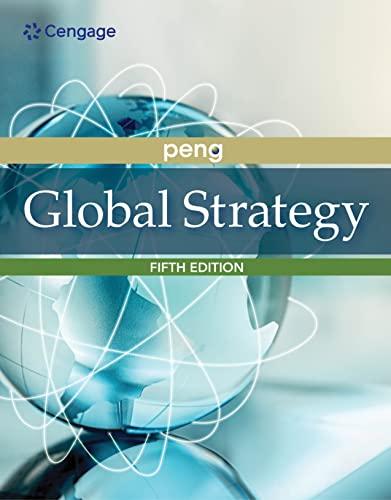First reported in 1976 in Sudan and Zaire (now called the Democratic Republic of the Congo [DRC]),
Question:
First reported in 1976 in Sudan and Zaire (now called the Democratic Republic of the Congo [DRC]), Ebola has been a known virus for more than four decades. Yet, there is still no effective vaccine or medicine. Between 1976 and 2013, sub-Saharan Africa saw 24 outbreaks with 1,716 cases. What really put Ebola on the center stage of global media—and on the pages of this book—was the 2014 outbreak, which was the most devastating outbreak: 15,000 reported cases and 6,000 deaths. Starting in Guinea, Liberia, and Sierra Leone, the disease quickly diffused to other West African countries such as the DRC, Nigeria, and Senegal. By September 2014, a Liberian man who traveled to Dallas was diagnosed to have Ebola. He died there in early October. Two American nurses who treated the patient became the first confirmed cases to be infected by Ebola in the United States, triggering panic throughout the country. State governments in Connecticut, Illinois, New Jersey, and New York demanded that anyone who traveled from affected African countries be subject to 21 days of quarantine—the longest period the Ebola virus was thought to need to incubate. In mid-October 2014, President Obama appointed a national Ebola response coordinator. All passengers arriving from affected African countries now had to go through screening, and all patients showing up at a US health care establishment had to answer a questionnaire regarding whether they traveled from these countries.
In the absence of effective vaccine or medicine, treatment was indirect. It centered on early supportive care with rehydration and symptomatic treatment. The measures included management of pain, nausea, fever, and anxiety, as well as rehydration via the oral or intravenous (IV) route.
Blood products such as packed red blood cells, platelets, or fresh frozen plasma might also be used. Intensive care was often used in the developed world. This included maintaining blood volume and electrolyte (salts) balance as well as treating any bacterial infections. Thankfully, the two American nurses recovered after several weeks of treatment.
By December 2014, there had been ten Ebola cases in the United States, and only two resulted in death—the second case of death was an African doctor who was contaminated by his patients in an Ebola-infested country.
Throughout the crisis, the initial silence of the pharmaceutical industry was conspicuous. Dr. Margaret Chan, Director-General of the World Health Organization (WHO), criticized the industry for failing to develop a vaccine for Ebola over the four decades during which the virus had threatened poor African countries. She complained that “a profit-driven industry does not invest in products for markets that cannot pay.” Initially reluctant, some pharmaceutical firms jumped in. In October 2014, GSK, a British drugmaker, announced that it expedited its research and development (R&D) in search of a vaccine. In 2010, the Canadian government had developed an experimental vaccine, VSV-EBOV, and licensed it to a small, virtually unknown biotech firm, NewLink Genetics in Ames, Iowa, for clinical trials. However, progress was slow and funding tight. In November 2014, Merck, a US giant, paid NewLink $50 million to buy the rights to the vaccine and to expedite R&D, and the Canadian government retained noncommercial rights to it. Also in November 2014, Sanofi, a French Big Pharma player, announced its intention to work with industry partners to combat Ebola.
The reason why pharmaceutical firms—especially Big Pharma—were reluctant until recently to apply their resources to find a cure for Ebola was simple. Even if successful, these efforts, which would mostly benefit African countries, would not be profitable. In other words, there was “no compelling business case.” After the disease arrived in the United States (and a few European countries), firms felt compelled to move.
Debates continued to rage. One side argued that pharmaceutical firms only focused on markets and products from which they could profit—with “Botox, baldness, and bonus” as their guiding light. Tropical diseases such as malaria and Ebola naturally would receive little (or no) attention. Another side argued that given limited resources, pharmaceutical firms rightly and strategically ignored (relatively) smaller-scale diseases such as Ebola because other diseases such as HIV and AIDS affect many more people. A number of pharmaceutical firms jumped onto the “Ebola bandwagon” simply to earn kudos for CSR, knowing that they would be unlikely to make any profits for their efforts. Or they were simply driven to do so because of public pressure—the series of eager announcements made in October and November 2014 were defensive in nature. Given the long lead time to develop any effective vaccine and the urgency to have a vaccine at hand when confronting an outbreak of Ebola (and other contagious diseases such as the coronavirus), how pharmaceutical firms manage their quest for the triple bottom line remains one of the leading strategic challenges they face.
CASE DISCUSSION QUESTIONS
1. Until recently, why were firms in the pharmaceutical industry reluctant to find a cure for Ebola?
2. What motivated the pharmaceutical firms to jump onto the “Ebola bandwagon” lately?
3. Did the pharmaceutical really want to solve a major public health problem or just want to earn some CSR kudos?
Step by Step Answer:






